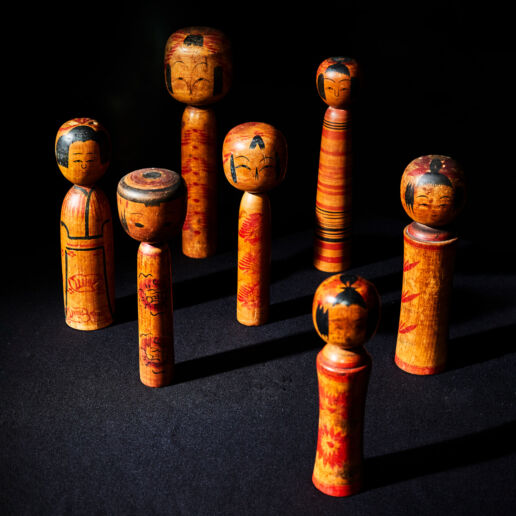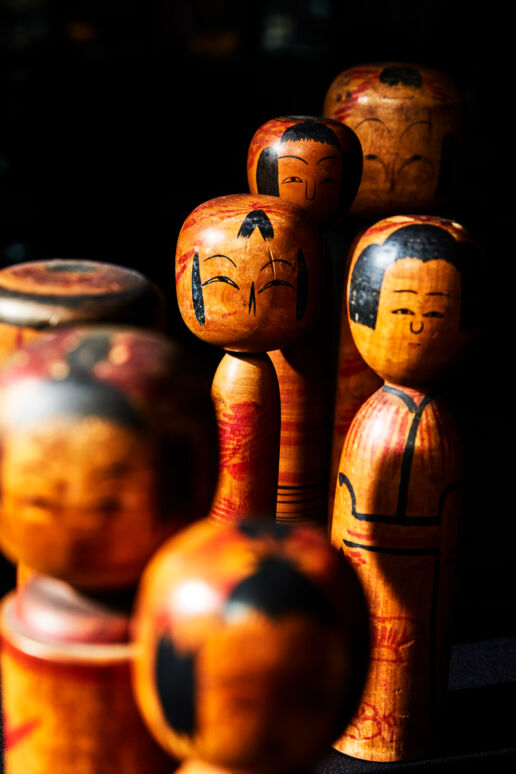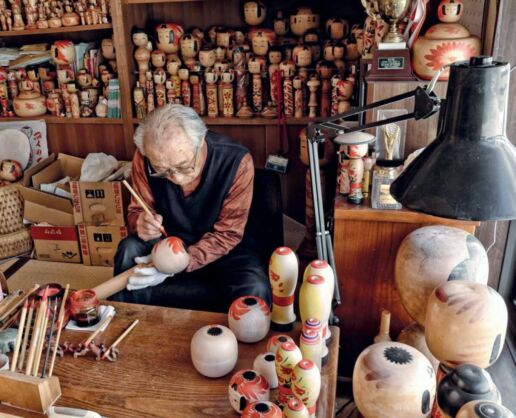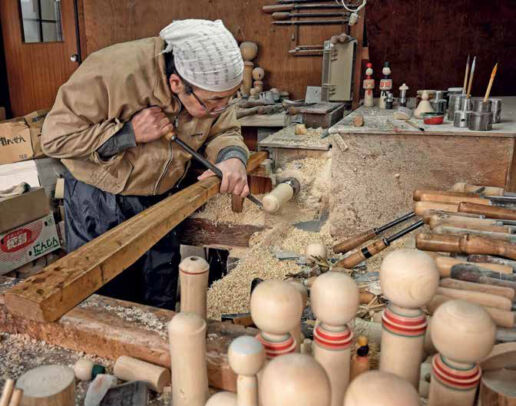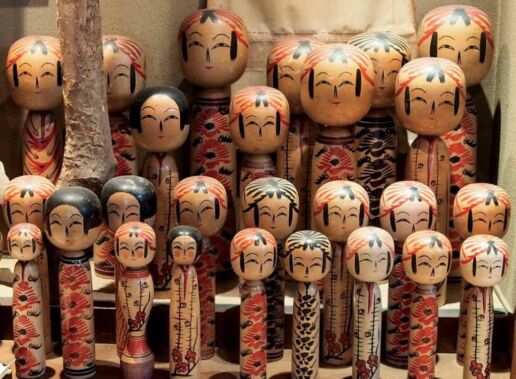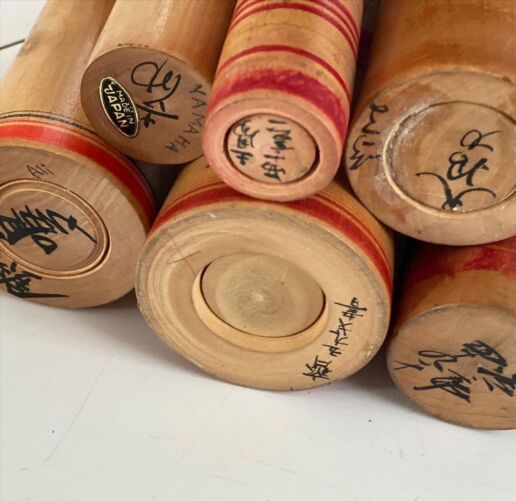MUCH MORE THAN A DOLL
The energy emanating from their elegant, hand-drawn faces is so peaceful that one look at a Kokeshi doll is sure to establish an emotional bond.
Hello Kitty, Ichimatsu dolls, Monchhichi, Pokemon, Totoro, Teru Teru Bozu… Japan has a reputation for its fascination with mascots, toys, anime characters, and everything else that is cute, and a passion to create brands. First appearing in the Edo Period*, the traditional Kokeshi dolls are known for their intricate craftsmanship and perhaps deserve the lion’s share of interest and respect.
Kokeshi dolls were originally made in the Tohuku Prefecture in northeastern Japan in the early 19th century. The local men inhabiting the highland villages of Tohuku made simple wooden dolls for children to play with during the long, harsh winters. This craft soon became a tradition that was passed on from generation to generation. The cylindrical wooden dolls had no arms or legs but featured folkloric motifs. These dolls gained recognition as tourists visiting the hot springs of Tohuku started taking them back home as souvenirs. In the years to come, the rising popularity and demand transformed Kokeshi dolls to become a quintessential Far Eastern item, appealing to people of all age groups, as toys for children and elegant, decorative gifts for adults. Another major change also took place after the demand for the dolls exceeded the capacity of the men who were producing them – the strictly patriarchal society saw women mastering the craft of Kokeshi and joining the workforce to overturn a centuries-old tradition.
There are twelve official Kokeshi dolls known for some common features in terms of shape, color, motifs and region: Naruko, Kijiyama, Nakanosawa, Nanbu, Hijori, Sakunami, Togatta, Tsuchiyu, Tsugaru, Yajiro, Yamagata, and Za. Regardless of the styles, Kokeshi dolls are invariably made using cranberry, maple or cherry wood. The Kokeshi master uses a lathe to handshape each part of the doll. The master also designs all the apparatus he uses in his workshop. This is a way of adapting work tools to the user and the user’s style and providing the comfort of movement. When the wood is shaped, drawings are made on the doll with a soft, weasel hair brush. Whatever the style, these dolls always have a pair of happy-looking eyes and a mature, peaceful and calm expression as if reflecting the philosophy of spreading love around them. Only black, red and green ink is used on a traditional Kokeshi. Once the master has signed the doll underneath the base, it is sealed with wax for protection.
Today, machine-made Kokeshi dolls are mass-produced and marketed all over the world. There are many popular doll brands inspired by real Kokeshi art, especially Kimmidoll, Usaburo, Momiji. These dolls sometimes carry messages, sometimes look like a famous model, sometimes vow money, luck, and love, and more recently decorate the shelves of fashionistas with their striking garments. While all this fame may sound good, it raises concerns about the future of real Kokeshi art. Rural Japan’s population is declining rapidly, and young people show little interest in the demanding Kokeshi apprenticeship. On the other hand, collectors do not consider mass-produced dolls to be genuine, because Kokeshi art is what everything mass production is not. So, if you have decided to acquire a Kokeshi, the right choice is the original and symbolic traditional dolls with the signature of the masters of Tohuku.
Authentic early 20th-century Kokeshi dolls signed by real Tohuku masters are now on sale at Sanayi313.
https://shop.sanayi313.com/en/product/set-of-seven-kokeshi-dolls
*Edo Period is a period in Japanese history that lasted from 1603 to 1868, starting with the establishment of the Tokugawa Shogunate by Tokugawa Ieyasu in Edo on 24 March 1603, and ending with the onset of the Meiji Restoration on 3 May 1868.


